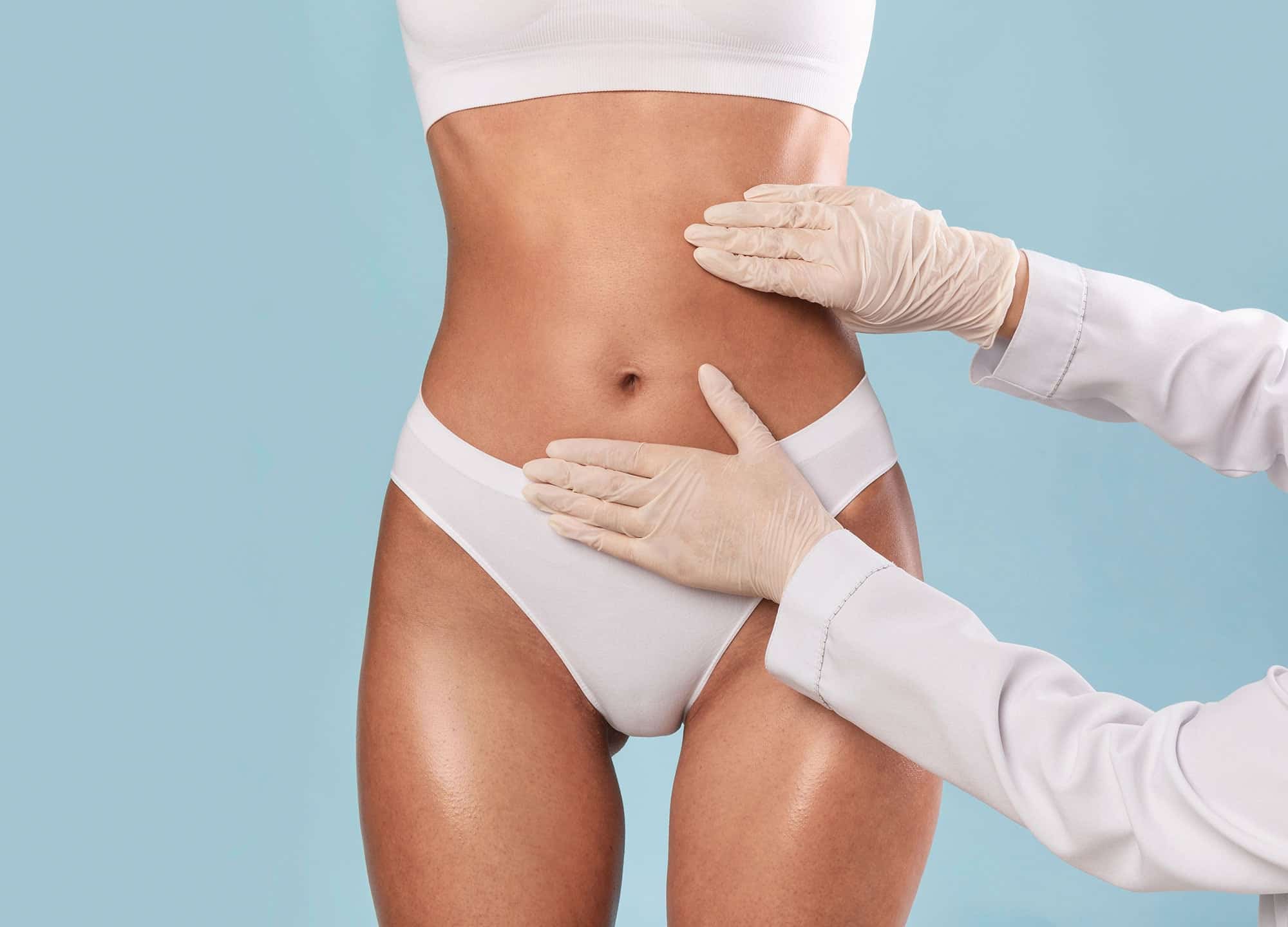When it comes to zapping small pockets of fat, few treatments are as well known as CoolSculpting, which is FDA-approved for freezing diet- and exercise-resistant fat on the abdomen, love handles, bra fat, inner and upper thighs, and upper arms. And while the concept sounds easy enough—freeze fat cells until they die, then let your body dispose of them—there’s more to it than that (and it’s worth knowing about some potential complications that recently made headlines). With that, we asked the experts for the facts on Coolsculpting—what to expect and how to get the best results.
1. Check that you’re a good candidate
CoolSculpting is not a weight-loss tool, so you should be close to your ideal weight before having the procedure. That said, in order for it to be effective, you also need to have enough pliable fat that can be suctioned into the CoolSculpting attachments, which currently come in three sizes.
“A great candidate is someone who is close to their ideal body weight but has small areas of unwanted fat—like an extra pinch around the belly, fat that bulges when wearing a bra, outer-thigh and waistline bulges,” says Charlotte, North Carolina, board-certified dermatologist Dr. Elizabeth Rostan.
2. Ask how many treatments you’ll need
“The number of treatments needed depends on the amount of excess fat—a small pinch or bulge can be expected to respond very well with one treatment,” says Dr. Rostan. “For a larger area, plan on two to three treatments. We expect about a 20% reduction with each treatment.” Make sure to mention your expectations during your consultation so your provider can use your input to create a treatment plan. (Plus you also want to know how much you’ll be investing overall.)
3. Find out who will be doing the procedure
CoolSculpting is noninvasive, so a few people might be wielding the device. “CoolSculpting can be performed by a certified physician or nurse,” says board-certified plastic surgeon Dr. Steve Fallek, founder of BeautyFix MedSpa in New York City. “A nurse practitioner or physician assistants may help manage a CoolSculpting treatment, but only with the appropriate training and under the supervision of a physician.”
4. Start documenting your experience
Once you’ve done your research and decided to give CoolSculpting a try, get ready for before and after photos, which can help you see the full extent of your results. “We will take before photos and follow up with patients 8 to 12 weeks after the last session, to get after photos,” says Dr. Rostan. Because it can take time to see changes, it’s hard to track when (and how well) the procedure is working. Take frequent photos of your target areas so you can compare them and more easily visualize the changes taking place.
5. Prepare for pain, just in case
“CoolSculpting should cause minimal pain,” says Dr. Fallek. “Patients will experience a slight sucking sensation as the applicator adheres to your body, followed by that signature cooling effect. The area on the body that is being treated will become numb within 5 to 10 minutes.” Mild tugging, aching, and stinging is totally common. Then, afterward, “the person performing the procedure will massage the treated area, to help break up frozen tissue—and some people find that the massage causes a small amount of pain, since the area where fat was taken is still tender,” he says.
6. Bring something to keep you busy
“A treatment cycle is 30 minutes. Often, to treat an entire abdomen, six areas may be planned for treatment,” says Dr. Rostan. “With the new Elite, we can treat two areas at the same time, thus reducing the treatment time.” Still, if you’re getting multiple sessions or body parts done, that time can add up, so bring a book or a tablet computer to keep you entertained. “During the process, many patients read a book, watch a TV show or videos on their phone, complete work on a laptop—some even take a nap,” says Dr. Fallek.
7. Understand the potential complications
As with any medical procedure, complications are rare, but they do happen. While swelling, bruising, sensitivity, skin redness, and localized pain are common—and not much to worry about—it’s possible to have less sensation in the treated area than beforehand, says Dr. Fallek. As for paradoxical adipose hyperplasia, which became a hot topic when supermodel Linda Evangelista shared her painful experience with it, it affects a very small percentage of people. “People with this unusual side effect experience an increase in fat cells that can cause the treated area to bulge,” he says. “It is more common in men and people of Latino or Hispanic descent.”
8. Manage your expectations
“Though this procedure can remove areas of fat, it is not a miracle cure—and people should not expect to see a complete removal of fat,” says Dr. Fallek. “The procedure will not work for everybody, and some people may experience worse side effects than others.” For instance, you might have intense soreness similar to what you’d experience after a tough workout. Everyone responds a little differently.
9. Be patient
You won’t see results overnight. In fact, “after the procedure, it may take around four to six months for the fat cells to leave the body,” says Dr. Fallek. “In that time, the area of fat will decrease by an average of 20%.” (That’s why photos can be so helpful in tracking the progress.)
10. Remember that long-term results still depend on you
As with any cosmetic treatment, the longevity of your results will depend on your future behavior. If you eat poorly and don’t exercise, CoolSculpting will not stop you from gaining weight. “Maintaining your normal weight and continuing with a smart diet and exercise is the best maintenance,” says Dr. Rostan. “The fat that is destroyed by the freezing does not come back, but fat in the area may expand, with caloric excess.”











